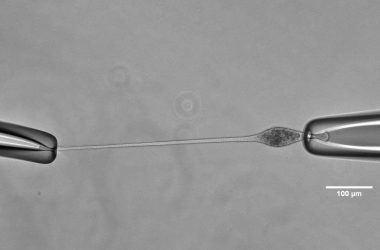A male tobacco budworm moth (below) uses an appendage called a hair pencil to fan perfume towards a female
Jan van Arkel
Male tobacco budworm moths have a unique way of attracting females – by collecting and emitting perfume from flowers.
While it is well known that female moths release scented chemicals to attract males, less is known about how male moths use scents to court females.
Research led by Coby Schal at North Carolina State University has revealed that male tobacco budworm moths collect a plant scent called methyl salicylate and use it to enhance their mating success.
Methyl salicylate is commonly found in the flower nectar of various plants and has a pleasant minty odor that attracts a wide range of insects.
Schal and his team conducted experiments by measuring the levels of methyl salicylate in male moths reared in a laboratory and those collected from a soya bean field. They found that the moths from the field had higher levels of the scent, indicating that they had harvested it from the crop plants.
During courtship, male moths release the methyl salicylate from their hair pencils, which are hairy-tipped appendages that emit a variety of chemicals for communication.
The researchers also discovered that female moths have antennae with two receptors specifically tuned to detect methyl salicylate. When the hair pencils of male moths were removed, their mating success decreased by about 30 percent.
These findings suggest that male moths use their hair pencils to emit methyl salicylate, a scent that females are naturally attracted to in plants. In doing so, they enhance females’ sexual receptivity as an “aphrodisiac,” according to Schal.
Similar behavior has also recently been observed in orchid bees, where males collect perfume from orchid flowers to attract females.
Topics:








